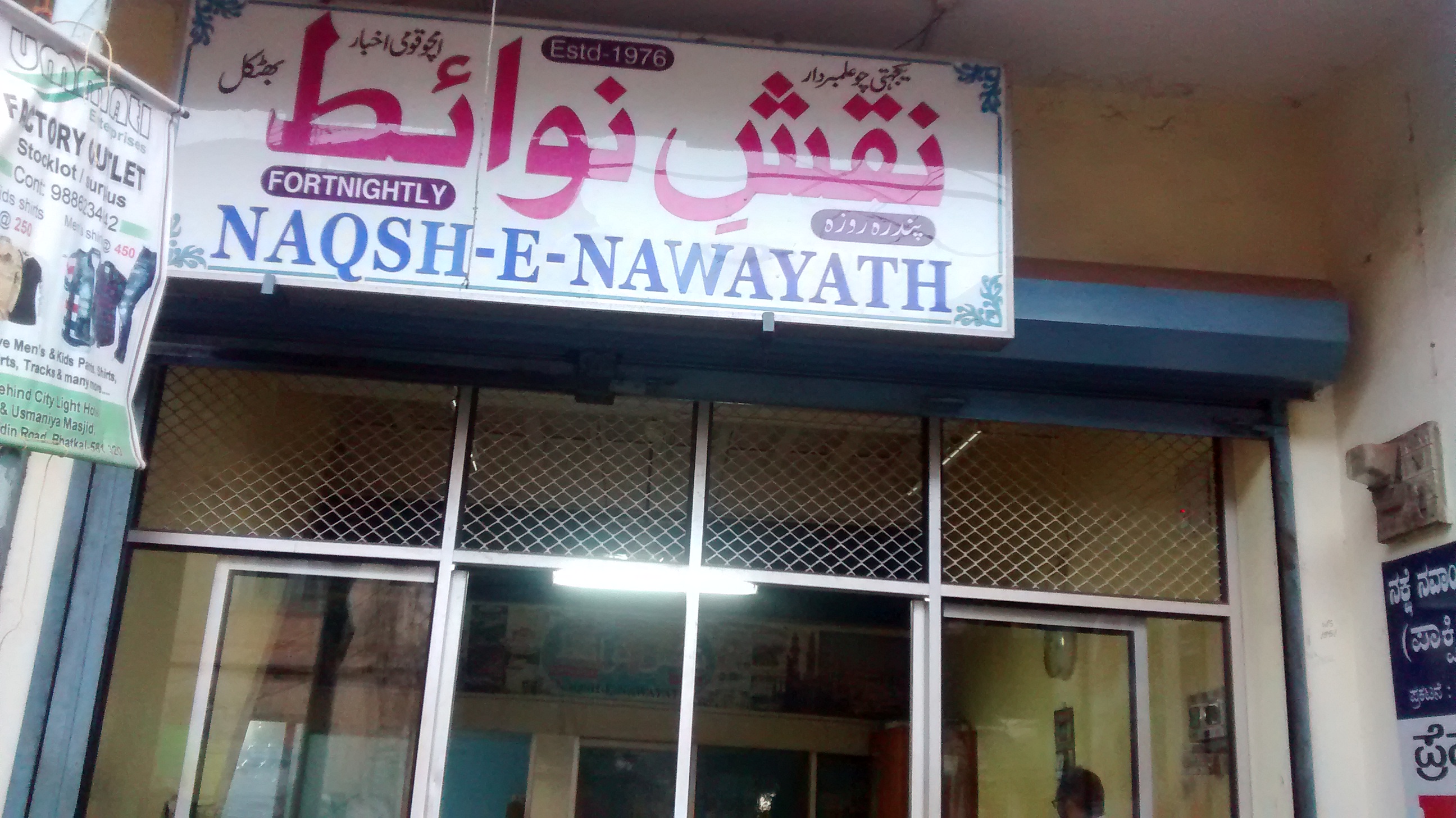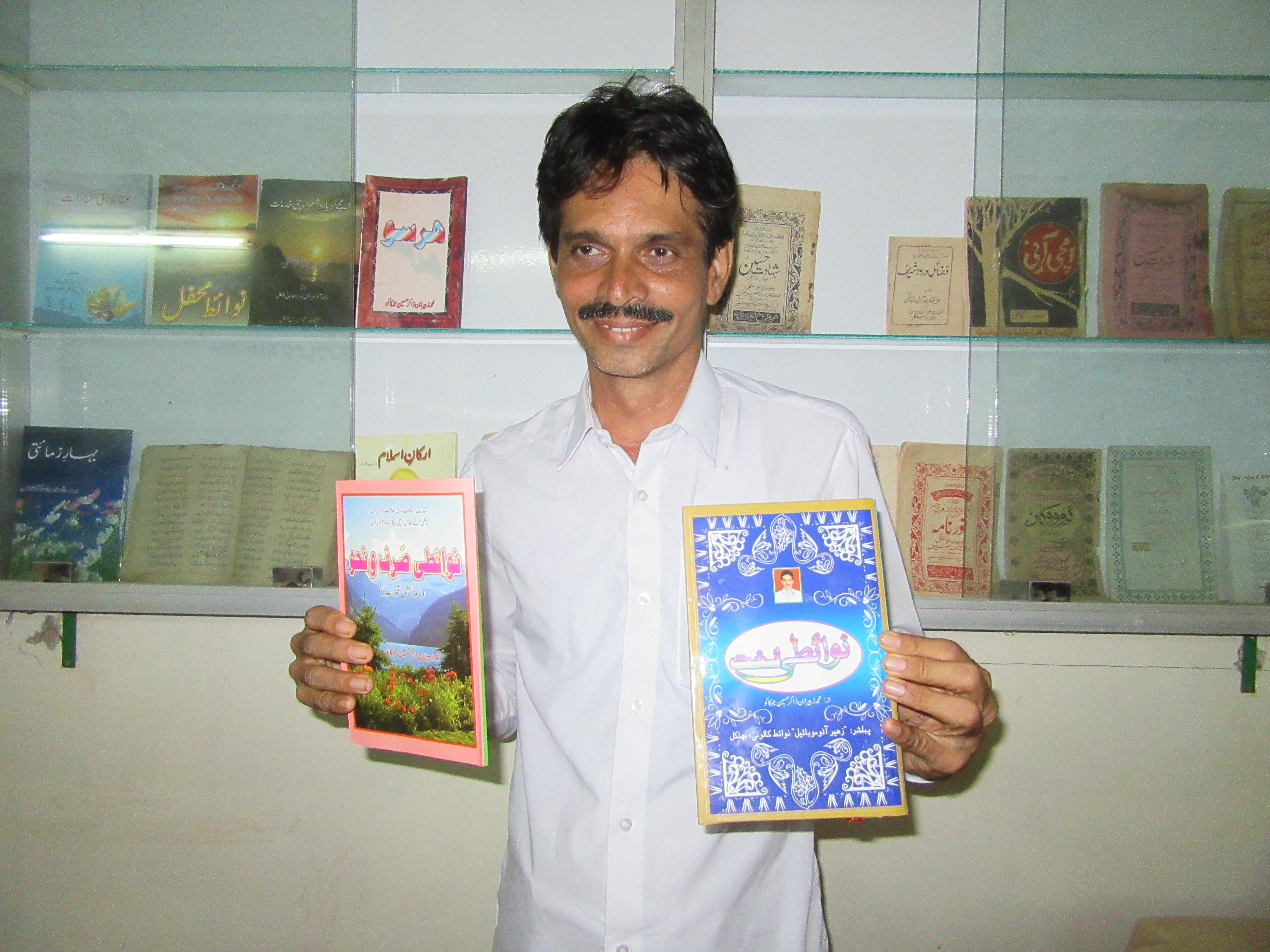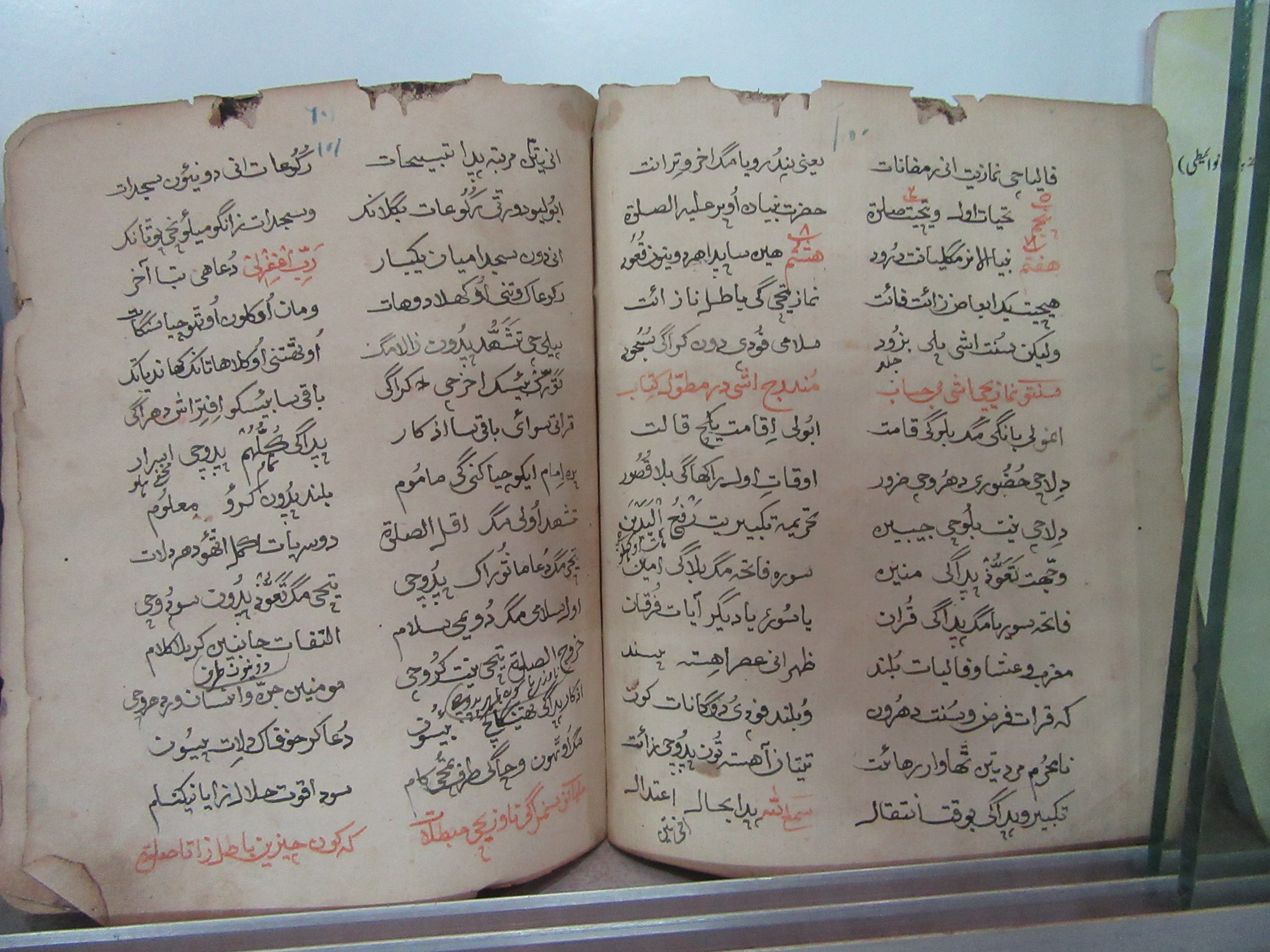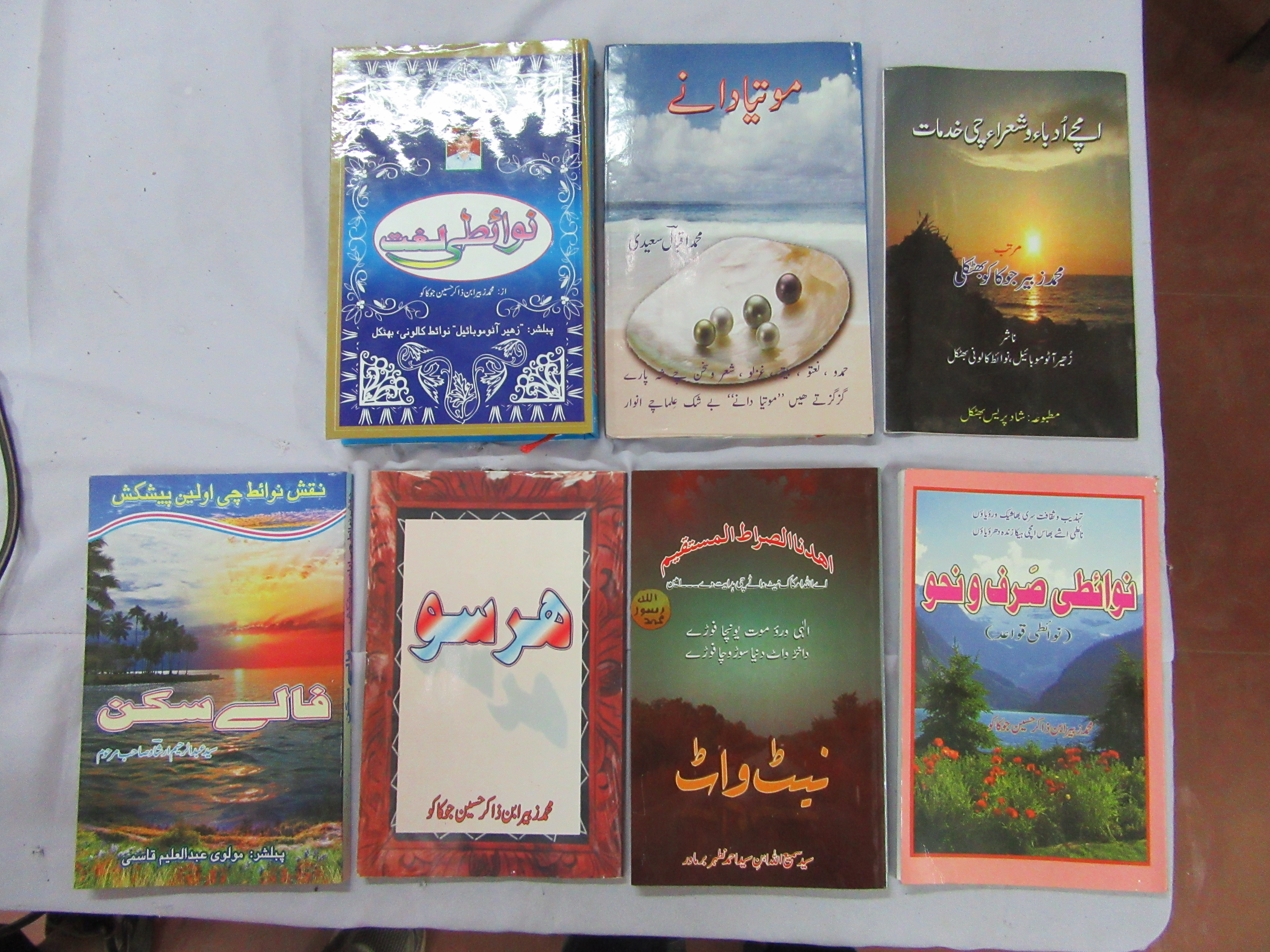Read part one here
Read part two here
Read part three here
Read Part four here
Read Part five here
The association of Bhatkal with the Arab world goes back to over a thousand years and this coastal town in Uttara Kannada takes immense pride in it. From clothes, perfumes to streets named after Arab cities, the Arab influence is visible. But one of the most enriching experiences of this tradition is the language of Nawayathi, which is a mix of Persian, Urdu, Arabic, Marathi and Konkani. The language is almost exclusive to Bhatkal, with only a few villages outside the town speaking this language. In the sixth of the nine-part series, Amit Kumar talks about the origins, history and legacy of Nawayathi and how it seeks to survive in the modern age.

“No matter where we go, we can identify our people. All it takes is a few words of Nawayathi,” says Maulavi Abdul Aleem Qasmi, the owner and editor of Naqsh-e-Nawayath, the only Nawayathi newspaper published in India. The 73-year-old resident of Bhatkal has been running the newspaper, published fortnightly, for the past 41 years, first as the owner and then as the editor after the demise of its founding editor Syed Abdul Rahim Irshad in 1996, after which the newspaper shifted from Mumbai to Bhatkal. Now run from an old building in Dubai market in Bhatkal, the fortnightly newspaper remains an important face of the language and the efforts to safeguard it. In fact, it is with a glint in his eye that Qasmi points out that even after all these changes, the newspaper, which has 16 pages, still sells about 3,000 copies per issue. About 80% of the copies are sent via post to its readers while the remaining are bought in the city. “The numbers have remained consistent and that makes me happy. The entire paper is proofread and published by two people,” he adds.
Bhatkalis offer a number of perspectives to now Nawayathi came into being. According to Qasmi, it is an amalgamation of nine languages (naw/nav=nine, ayath=language), although he is unable to suggest all the nine languages from which the language originated. In its current form, the language is closest to Konkani. Qasmi says that when the Arab traders came to India, a number of them settled here in Bhatkal due to its favourable climate and location. The descendants of these Arabs would later be identified as Nawayath.

While the language itself owed its roots to a number of languages, from the very beginning it used the Persian script. His newspaper, which once focussed on the most important news from the region, made the shift to more feature-based items over the past decade. “With the advent of the internet and the emergence of local websites and news channels, there was little for us in the form of news. So we now focus on Islamic teaching, columns from our readers and obituaries and marriages. In fact, now the obituaries and marriages sections are the main USP of our newspaper,” he adds.
Persian, Nawayathi and Urdu: How written documents evolved in Bhatkal
According to Maulana Abdul Aziz Kaziya, an expert on Nawayathi and a member of Nawayath Mehfil, an organisation which is working to restore the glory of the language, Nawayathi was not initially used in a written form. “Up to the 17th century, almost all our records and written material remained in Persian even though Nawayathi was the spoken language. It was only around the end of 17th century that the language began to be used in written form too in the Persian script. I have seen documents, contracts and official letters written from that period in Nawayathi,” he says. But with the 20th century, a new challenge faced the Bhatkalis. “When the Anjuman Hami-e-Muslimeen was established in 1919, they were faced with a decision,” says Kaziya. “They wanted to create an education system that would help students equip themselves with the modern world while retaining the core Islamic principles. So, they chose Urdu over Nawayathi and since then Urdu has become the de facto language of education here,” he adds. While it proved to be a positive for students, it nevertheless relegated Nawayathi to the status of a “home” language, Kaziya adds. “Even today, almost all families speak Nawayathi at home and amongst each other. But it was never, and is unlikely, to be taught in schools,” he says.

Scholars, poems and the future of the language
Aikage Sayyano-Khalabe Ismail (18th century): Nawayathi Dua
The original song has 143 verses. Here are the first ten.
Aikage Sayyano, mege sangta
Allahche Pashi, Taufiq Mangta…
Toge naito amige kiwro,
Tekage waknuk napawe Iwro
Toge postolo amchoge dhani
Teka nai zodo upawanit koni
Manat mokhat aslale to Zane
Techege mazuk na-hale pane
Izanak suzanak techege niamato
Inwa gawrwa techege sifato
Inauche gaurauche tekachge sazawar
Techege athwen inauta janawar
Mohammed nabiyacho karage wakan
Allahge rakhnit tumchige Iman
Gosacho mogyo amchege wari
Yeko zan nahi techege pari
Taikage fetaules amcher rabban
Aplege kudrat ko karuk bayan
Jibreel yawn teikage Sangile,
Qur’an ghewn teicharge diwile
Translation:
Listen, friends (female) I am going to tell you;
I am going to pray to Allah for prosperity
He is the master, we are the slaves;
Words are not sufficient to praise him.
He looks after us, he is our Lord;
None is born equal to him.
Whatever is in the mind and mouth (lips) he knows;
Without his knowledge, the leaf does not move.
His bounties are bestowed upon the small as well as the great;
His attributes are to be found in both the rich and the poor.
He is the only one fit to be praised and respected;
His praises are sung by animals.
Sing the praises of Prophet Muhammad;
Allah will safeguard your faith.
The Friend of God is unto us;
There is no one like him.
God sent him unto us;
In order to reveal to us his Power.
Gabriel came and revealed to him;
He gave the Qur’an to him.
(From The Nawayaths of Kanara: Victor D’Souza, 1955)
These lines are still taught to many children in Bhatkal as a dua (prayer). Nawayathi has been blessed with a number of eminent authors: Sairul Nisa, Maulud Nanna, Garvo Vakhan and Kaile Bayan among others, but you would struggle to find their books in Bhatkal today. The former editor of Naqsh-e-Nawayath, Syed Abdul Rahim Irshad is regarded by many as the most prominent author/contributor Nawayathi, and his book Faal-e-Sakhan is regarded as the first attempt to go beyond Islamic teachings/writings in Nawayathi and delve into the realm of imagination and poetry. However, you would be hard pressed to find a copy of even this book in Bhatkal.

While the language flourishes in the spoken form, it is clear that the same cannot be said of its written form and the literary works. According to Qasmi, the preference for Urdu and Arabic over Nawayathi has in some ways, negatively impacted the local language. “I doubt if the present generation has read much in Nawayathi since the local schools and madrasas give preference to Urdu, English and Kannada,” he adds. In light of the decline in the status of Nawayathi, a committee called Nawayath Mehfil was formed about 12 years ago. Mohammed Zubair Jakaku, joint secretary of the Mehfil, has written four books in Nawayathi, including the language’s first-ever dictionary and a grammar book, says that there is an attempt to revitalise books written in Nawayathi, and that they are republishing old authors to ensure that these treasures are not lost forever.

The committee is working on reviving old Nawayathi texts along with working on a translation of Quran to Nawayathi. “We have Quran in 55 languages in our museum and I believe that a copy of the Nawayathi Quran will be a welcome addition to the same. This language is distinctly unique and a matter of pride for us. I hope we do justice to it,” says Qasmi. For now, the language looks safe in the hands of Bhatkalis and in a city that has been given undue attention for all the wrong reasons, it acts as a glue that keeps the society together.

